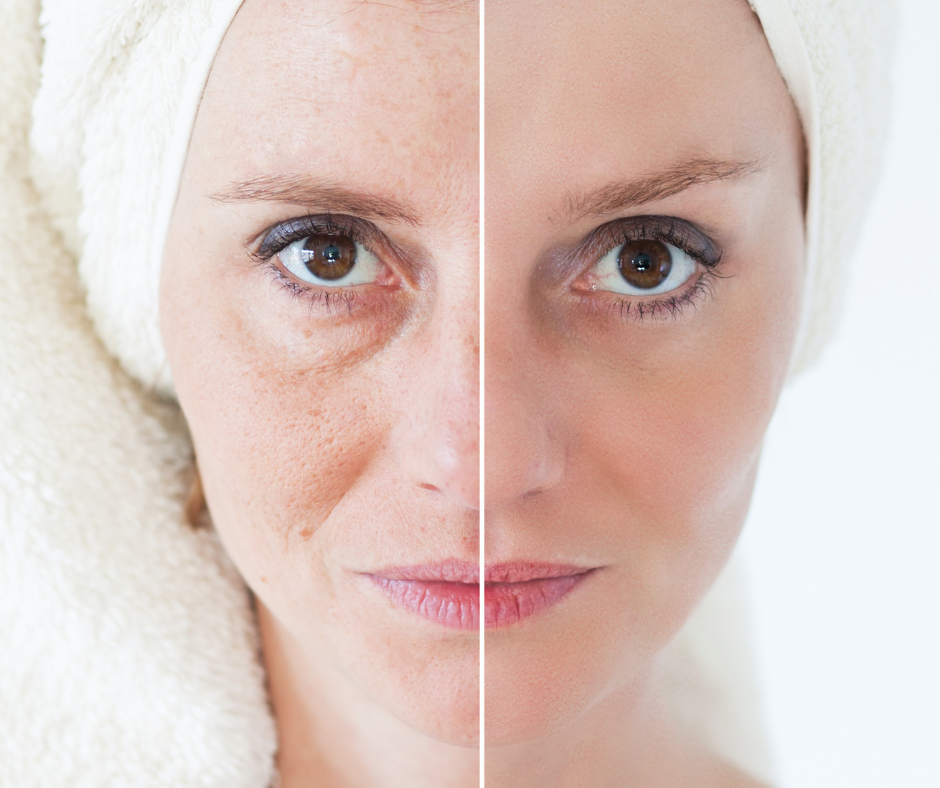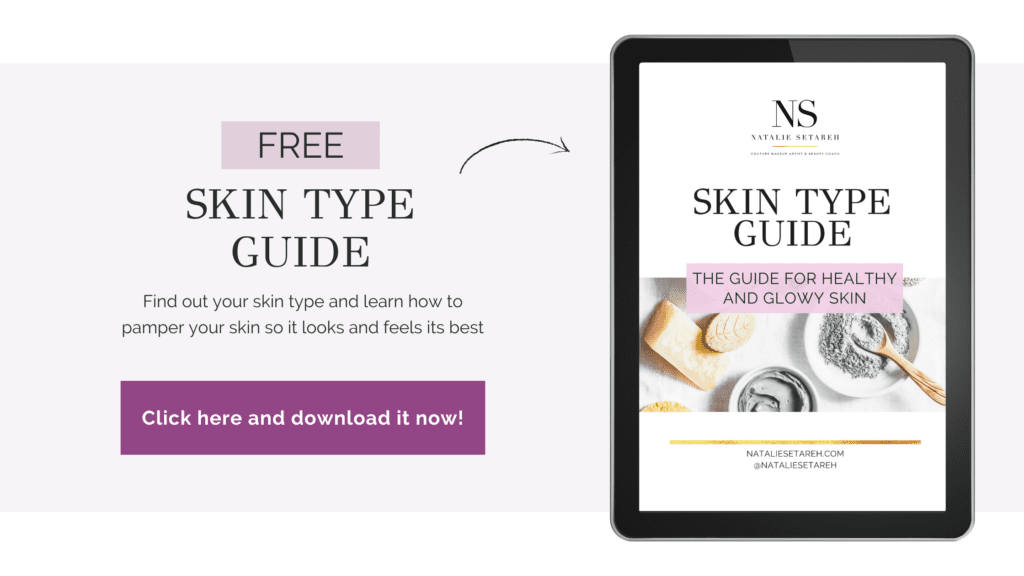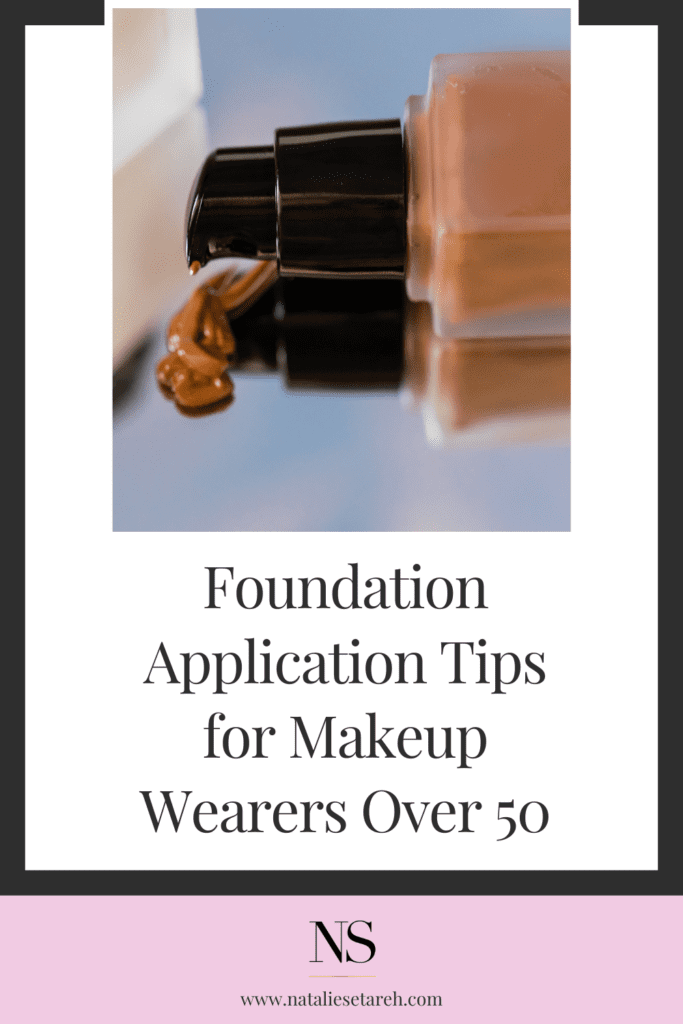
This post was originally published on May 9, 2023. It has been lightly edited for easier reading on April 19, 2024.
Hi everyone! My name is Natalie Setareh, a former makeup artist now makeup teacher.
One of the most popular topics I write and talk about has to do with makeup for mature skin.
Today we’re diving into the wonderful world of makeup for mature skin. Many women over 50 want to achieve flawless coverage but find their foundation accentuates texture and pores. Let’s troubleshoot this together!
I recently received a really great question from someone who wants to know how they can apply foundation in a way that suits their more mature skin and covers up noticeable texture and pores. As a makeup educator who believes that makeup is for everyone, I was excited to dive in and answer this question! Makeup for women over 50 is a little bit different, so let’s get into it.
Crista Asks:
I just started wearing makeup again at age 52. I follow instructions about the order of things (moisturizer, primer, foundation, etc.) but my makeup still looks really noticeable. When I put foundation on my nose, it shows all the pores and just seems like it never blends in. Same with the highlighter. PLEASE HELP!
Or, if you would rather listen to this episode, you can find the Be Your Own Makeup Artist Podcast on all major podcast streaming services, or just click on one of the links below!
Listen iTunes | Spotify | Other
By the way, you can ask me YOUR beauty questions at nataliesetareh.com/asksetareh
Dear Crista:
Thank you for your question. I don’t think there’s enough information out there regarding makeup for women over 50 and it’s one of the things I’m motivated to change. Makeup is for everyone, as I always say!
Okay, I’m going to do my best to troubleshoot your issues. There’s a lot to unpack here and when I answer questions, I like to answer them as thoroughly as possible. As you can understand, without visuals and knowing more about you personally, it’s hard.
I offer in-depth face shape/color analysis and 1:1 coaching inside of my Create Your Signature Makeup Look program.
Learn More About Working With me 1:1 Here >
Applying Foundation and Other Makeup for Women Over 50
First, you mentioned that you just started wearing makeup again at 52. Yay! Welcome back to the club 🙂
Right off the bat, I would say there are three things we need to troubleshoot here.
1. There’s either an issue with your skin prep and/or skincare routine.
2. An issue with the makeup formulations you’re using.
3. Or an issue with the tools/techniques you’re using.
Let me ask you a serious question… when was the last time you were wearing makeup on a consistent basis?
There’s one thing we need to remember when it comes to makeup for women over 50. You’re experiencing big changes! Not only does our skin change as we age but our skin type might change as well. That plus the way we apply makeup changes, in addition to where and how much makeup we apply changes as we age.
#1 Troubleshooting Skincare
Re-Calibrate Your Skin Type/Skin Care Routine
When It Comes to Your Skin… I’ve found with myself and my clients, as our skin ages, it becomes even more important to use skincare and makeup products formulated for your specific skin type.
If you don’t know your skin type and what type of skin care routine you should consider (especially when it comes to your makeup looking good), I have a great free skin type quiz that will give you everything you need to get started.
Make Sure Your Beauty Collection Isn’t Expired
If you are using skincare and makeup products that are formulated for your skin type and not expired.
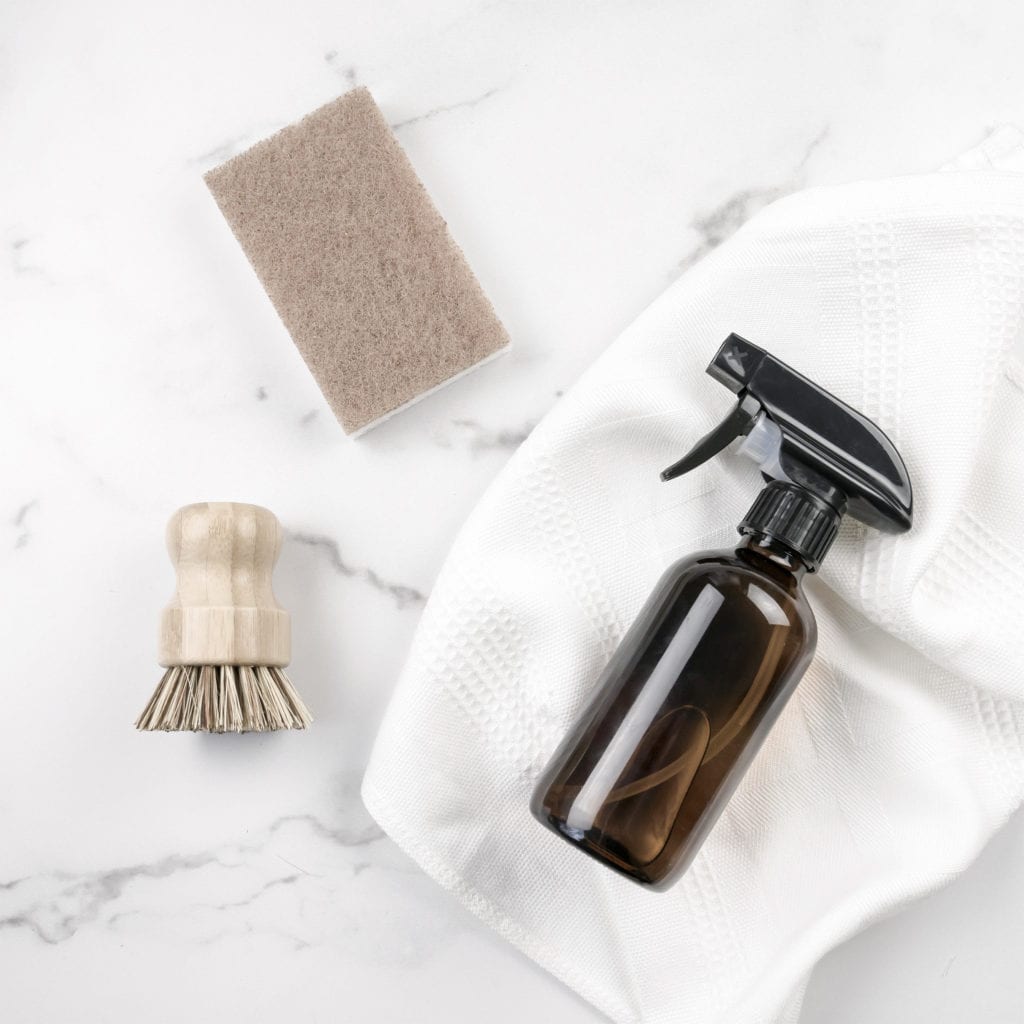
Understand the Pore Situation
Let’s Talk About Pores For A Second
The problem is that because we don’t see pores on people anymore in photos (hello, beauty filters everywhere) and we feel this need to get rid of them. We are expertly marketed to and taught by the beauty industry to be self-conscious of our pores and to buy their products to ‘get rid of them’ or ‘make them invisible’. Sadly, this is false advertising.
Everyone has pores and everyone’s pores range in size.
Some have barely-there pores and others have pores that are more noticeable (especially to the person whom the pores belong to). Pore size largely has to do with genetics.
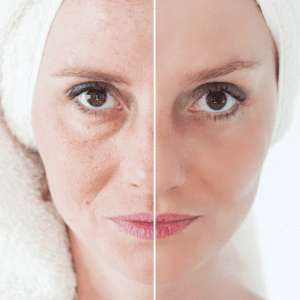
Dirty pores are noticeable on anyone, regardless of how large they are and at the end of the day there’s no amount of makeup or skincare products that are going to make them go away! Again, consistently washing your face with a cleanser formulated for your skin type is going to fix this issue.
Secondly, using skin care products that help tighten pores should be in rotation, if you are super self-conscious of them.
There are products that will help blur them or tighten them to reduce their appearance.
I wrote a blog on 4 Things Makeup Can/Cannot Do, you should check it out when you have the time.
You mentioned that when you put foundation on your pores, your pores become even more noticeable…
Pores Are Personal
Most people you are interacting with you or who are looking at you wherever you are, aren’t sitting there noticing your pores and contemplating them (they are more worried about you noticing their pores!).
Without further ado, here are three practical suggestions that could help you out! If you want me to personally shop these products for you, you can book my Personalized 5 Makeup Shopping Service here.
Possible Solution: Incorporate a Pore Minimizer / Pore Tightener into Your Skin Care Routine and/or Your Skin Prep
Do you want visibly smaller pores?
Then you need to *consistently* use products that are formulated for your skin type. I know we’re here to talk about makeup for women over 50, but prepping your skin is an important step… especially if your goal is to minimize the look of your pores. As with any skincare issue we have, the key word is consistent. And no, you don’t need to break the bank to do this.
Some of the active ingredients to look out that may help reduce the size or appearance of pores (amongst other things) are:
Alpha hydroxy acids (AHAs)
AHAs are a type of chemical exfoliant that can help to remove dead skin cells and debris from the surface of the skin. This can help to unclog pores and make them appear smaller. Some common AHAs include glycolic acid, lactic acid, and mandelic acid.
Beta hydroxy acids (BHAs)
BHAs are another type of chemical exfoliant that can help to reduce the appearance of pores. BHAs are oil-soluble, which means that they can penetrate deeper into the skin than AHAs. This makes them effective at dissolving oil and sebum, which can clog pores and make them appear larger. Some common BHAs include salicylic acid and betaine salicylate.
Retinoids
Retinoids are a type of vitamin A that can help to improve the overall appearance of the skin, including the size of pores. They work by increasing cell turnover, which can help to remove dead skin cells and debris from the surface of the skin. This can help to unclog pores and make them appear smaller. Some common retinoids include tretinoin, adapalene, and retinol.
Niacinamide
Niacinamide is a form of vitamin B3 that can help to improve the appearance of the skin in a number of ways, including reducing the appearance of pores. It works by reducing inflammation and sebum production, which can help to keep pores clean and unclogged.
Green tea extract
Green tea extract is a natural ingredient that has been shown to be effective in reducing the appearance of pores. It contains antioxidants that can help to protect the skin from damage, and it also contains tannins that can help to tighten pores.
Hyaluronic acid
Hyaluronic acid is a natural substance that helps to keep the skin hydrated. When the skin is hydrated, it appears plumper and smoother, which can help to make pores appear smaller.
#2 What’s Different About Applying Makeup for Women Over 50
As we age, our skin changes and so too does how we apply makeup. Makeup for women over 50 is different from makeup for women in their 20s and 30s. Instead of outlining all the things in this post, I’m going to leave you a great place to start!
I suggest listening to my interview with Sonia Roselli. We discussed ‘Makeup For Mature Skin’ and Sonia delivers so many mind-blowing nuggets. She goes deep into skin care as well! You’ll want to take notes. Trust me.
Check out Makeup For Mature Skin here >
#3 Tweak Your Techniques
Remember that makeup is a tool for artistic expression, it’s not an exact science and there’s no one size fits all makeup application. We all have different skin types, live in different climates, and have different lifestyles. On top of that, we all have different styles and preferences.
Suggestion 1: Try Skipping The Primer
As a less-is-more makeup artist, I like to skip primer when possible. It’s just another layer or product that can make the face feel heavy. And especially as we get older, the last thing we want is our face feeling weighed down by product. Plus, we have more lines on our face for product to ‘crease’ into, which ends up less flattering than going au naturel.
However, with all that being said, I do reach for primers when the skin prep didn’t achieve what I wanted or I know it’s going to be a long ‘makeup’ day.
Suggestion 2: Use half as much foundation as you are currently using.
This is another tip that I love sharing on the topic of makeup for women over 50. More foundation is always more noticeable than less foundation. Try using half the amount of foundation you are currently using and focus on buffing it into your skin. Using the right makeup tools is crucial in a flawless makeup application.
Really let the makeup sit into your skin for a moment.
And if you need more coverage, you can apply another thin layer. This is called building your foundation and I demonstrate this technique in my online course.
It’s easier to build foundation than to take off foundation! (I demo how to do this inside of my course, Learn Makeup in 5 Days!)
If you’re curious about the foundations I use in my professional kit, read this post. I share them all there!
Suggestion 3: Use a light-reflecting/blurring primer and let it sit for 30 seconds-1 minutes
If you skipped the primer and did suggestion 3 and you still aren’t happy with the results, let’s revisit primer.
When you apply primer, really let it have a moment to settle on the face.
P.S. the same is true for foundation!
#4 Assess Your Tools
You mentioned highlighter not blending in. This is likely because (1) either your highlighter is old; or (2) the highlight is of poor quality; or (3) the brush you are using is of poor quality.
The older the highlighter is, the more likely the brush is only going to pick up the glitter or sparkle (coarser) ingredients. This paves the way for the highlight to look like it was not blending well because it’s picking up only the shine and not the binding ingredients.
Highlighters of poor quality also don’t blend well. Mostly because they are using inexpensive, ‘shiny’ ingredients. They may look pretty in the package and may even ‘swatch’ beautifully but apply awful in real life.
Brush quality also has a lot to do with makeup application. So much so that I wrote a book on makeup brushes and how to build a collection that will work for you (not against you) for a lifetime. You can get a sneak peek of what I include in the book in this post: Ultimate Guide on Makeup Brushes.
When pigment products don’t blend well, it’s normally because of one or more of the three reasons I listed above.
Closing Thoughts
Crista, I’m so glad that you are using makeup again! I’m also thrilled you trusted me to answer your question. I know it can feel frustrating when you’re doing everything right (according to how the beauty industry wants us to do things) but it’s not working.
As you may or may not know, I’m a “less is more” makeup artist turned educator. Investing time (and yes, money) into learning about makeup and how to apply makeup is much more empowering than just buying makeup products I tell you to buy.
Here are some of the makeup education resources I offer:
Be Your Own Makeup Artist
I wrote my book, Be Your Own Makeup Artist which is also cosmetology school curriculum! You can get a copy anywhere you shop for books but the hardcover is exclusively available on my website at nataliesetareh.com/byomua – with your purchase, you’ll get my free Essential Tools For Makeup digital download, which is where I list all my favorite tools (to help you buff in your foundation like a pro) without any brand bias!
Learn Makeup In 5 Days Online Course
If you really want to re-learn makeup, check out my online course ‘Learn Makeup in 5 Days’. I promise, you’ll learn everything you need to learn to master basic, everyday makeup without the overwhelm or brand bias.
Create Your Signature Makeup Look
Last but not least, if you really want to have 1:1 support, in-depth facial analysis, custom face charts, concierge makeup shopping, and support don’t forget about Create Your Signature Makeup Look. I mentioned it earlier in the post.
I wish you all the best and stay beautiful!
Natalie
Beauty is about perception, not about make-up. I think the beginning of all beauty is knowing and liking oneself. You can't put on make-up, or dress yourself, or do you hair with any sort of fun or joy if you're doing it from a position of correction.
kevyn aucoin
